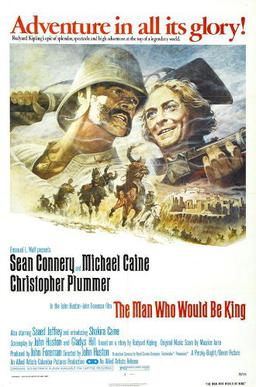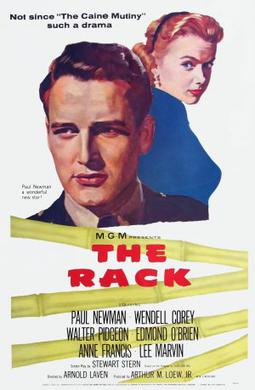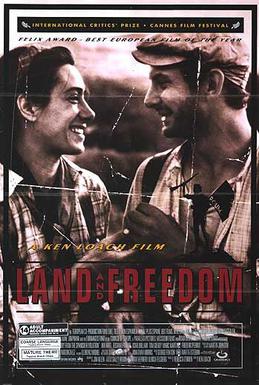SYNOPSIS: "The Man Who Would Be King" is
the retelling of the classic adventure story by Rudyard Kipling. Two British
soldiers (Sean Connery and Michael Caine) trek to Afghanistan to make their
fortune. They offer themselves as military trainers and help a village defeat
its rivals. In the process, one of them is proclaimed a god. They now are
governing the area and are rich beyond their dreams. Unfortunately, being a god
can go to your head.
BACK-STORY: “The Man Who Would Be King” is a war movie that was released in 1975. It was directed by John Huston and is based on a short story by Rudyard Kipling. Huston co-wrote the screenplay. Originally intended as a project for Humphrey Bogart and Clark Gable, then Burt Lancaster and Kirk Douglas, then Robert Redford and Paul Newman, it was finally made starring Michael Caine and Sean Connery. It was nominated for Academy Awards for Best Art Direction, Writing, Costume Design, and Editing. The movie was critically acclaimed and did well at the box office.
BACK-STORY: “The Man Who Would Be King” is a war movie that was released in 1975. It was directed by John Huston and is based on a short story by Rudyard Kipling. Huston co-wrote the screenplay. Originally intended as a project for Humphrey Bogart and Clark Gable, then Burt Lancaster and Kirk Douglas, then Robert Redford and Paul Newman, it was finally made starring Michael Caine and Sean Connery. It was nominated for Academy Awards for Best Art Direction, Writing, Costume Design, and Editing. The movie was critically acclaimed and did well at the box office.
TRIVIA: Wikipedia, imdb
1. In the novella, the narrator was
anonymous. The movie makes him Rudyard
Kipling.
2. John Huston was a huge Kipling fan from
childhood when he was bedridden and read all of his works. He wanted to make the movie since the
1950s. Originally he envisioned the two
leads to be Clark Gable and Humphrey Bogart, and then Burt Lancaster and Kirk
Douglas, and then Richard Burton and Peter O’Toole, and then Robert Redford and
Paul Newman.
3. Huston wanted a native-looking actress to
play Roxane and was complaining to Michael Caine at a dinner with Caine’s wife
Shakira. They both looked at Shakira,
who was from Asia, and had a brainstorm.
4. The movie was nominated for Oscars for Art
Direction, Writing, Costume Design, and Editing.
5. Sean Connery’s favorite role.
Belle and Blade = N/A
Brassey’s = 4.0
Video Hound = N/A
War Movies = 5.0
Military History = #74
Channel 4 = not on list
Film Site = yes
101 War Movies = no
Rotten Tomatoes = no









